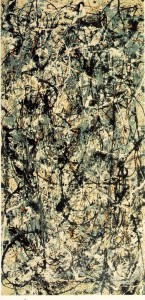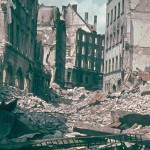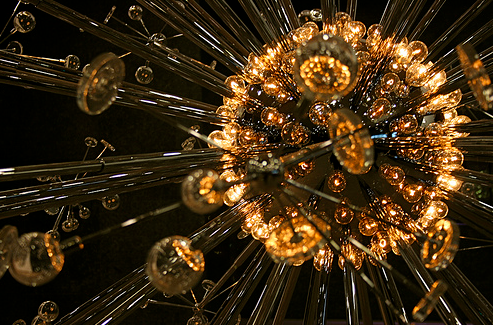Why Is the Art From a Culture a Good Reflection of That Culture?
Does Fine art Reflect Culture? How is art reflective?
Primarily this article explores how 20th century art reflected the culture effectually it
This should provide some help to those looking for modernistic examples of art reflecting the civilization
———————————————————————————————————————————————-
From time to time I have heard the expression that "art reflects the culture effectually it". I was curious about what that saying meant, or if it was true and how it was true. I think that it might be helpful to offset with a consideration of what role the creative person fulfils in lodge. Joseph Conrad declares that the role of the artist is
"To snatch in a moment of courage, from the remorseless rush of time, a passing phase of life, is only the first of the task."
Revealing a sliver of life, even if it is merely a shifting and flashing glance, to the audience is the substance and showtime of art. This is the job, the role, of the creative person in society: to capture the momentary and transform it into something static and awe-inspiring. Art transcends fourth dimension and space insofar as it takes a phase of life and pulls information technology outside of time, but it must too be referential of the time out of which it came. Then it must reflect the time out of which it comes, but it must also speak across the ages. Therefore, fine art is cogitating of the time out of which it is taken.
Furthermore, Aristotle reminds us that art arose out of an instinct–aninstinct–for imitation. We learn by fake to begin with, only later on on we accept pleasure in the fine art which imitates life or nature the all-time. That does not have to hateful strict realism, it could embrace other styles of fine art which please the audition and bring them to understand something almost life and being. Thus if art reflects life, it must follow that information technology could likewise reflect other things too, such as the culture or time in which it is placed.
It seems that the artisan of useful objects creates tools and equipment for life in the hither and now, and only makes things which are currently in demand or which volition become in demand. The useful art that is made is a nifty identify to showtime if you'd like to see what the civilisation is similar, but this is not the purpose of this commodity. I will briefly mention one thing: take silverware for instance. Yous can look at the history of silverware and observe that today'southward ideal silverware is less ornate and dispensable, merely the most sought after characteristic is compostability or beingness fabricated of recycled materials, as Chipotle's cutlery and other packaging is. If you await at silverware and cutlery from 100 years ago, you lot would exist surprised to see how ornate it is and how many different types of forks and spoons there are for different eating situations and foods. Today, it seems our silverware is made to deliver food and so exist disposed of but not wasted. At that place'south a movement towards convenience without the guilt of waste (which comes with use of regular plastic ware).
But dorsum to the original topic, I have some probing questions about it.
What bear witness do nosotros see of art reflecting our culture today? How is our culture present in the art that we see on a daily basis? What is the civilisation reflecting and is that reflection intentional? What are the objects that our civilisation values and are our cultural values reflected in the objects fabricated today? How are we supposed to identify which pieces best or most essentially limited the civilisation?
To what extent can a piece exist said objectively to reflect the culture? The idea that a piece of art tin can reflect the culture seems to me immediately an opportunity for ideologues to grasp our attending: "Now see hither! This slice is a perfect of instance of [some view of the world] which should be [praised or blamed, imitated or avoided, etc.]."

Jackson Pollock, Cathedral, 1947; Dallas Museum of Fine art
Let's have an case: Abstract Expressionism–to what extent did information technology reverberate the culture? I believe it reflected at least some attribute of the culture quite well.
Indeed, at that place are many who would praise and even more (I think) that would blame Pollock'south "Cathedral" equally evidence of what is right or wrong with art, but both tin at least hold that in some ways it is an encapsulation of the culture at that time (1947 post WWII United States). Jackson Pollock was painting at a time when Earth War 2 had destroyed most of Europe and with it the cultural and historical fine art centers of the quondam world (specifically Paris and Munich). New York had thus risen to the condition equally the art capital of the globe in the wake of the two world wars. Abstract expressionism in some ways is merely taking expressionism, equally started in Munich in the early 1900'south, to its natural upshot. I betoken to the der Blau Riter movement headed up by Wassily Kandinsky and Paul Klee as being inherently modern and novel, trying to bandage off the old world and its pre-conceived notions of what traditional canons of dazzler are. Picasso is doing the same thing. In the early on 20th century, they are reflecting that cultural split of old world and new world. Only back to the Ab-Ex art: it is precisely because New York took a place in the world art scene's spotlight after WWII that Pollock and Willem de Kooning (and others in the New York school) gained popularity and notoriety. Nevertheless, Pollock's artwork reflects that new and inherently modern sense about life postal service WWII and life in the 20th century in general. An aesthetic of daze value, novelty, absent of meaning and intention, yet somehow strangely captivating and full of layers and involvement.

Munich after bombings in WWII
Yet, to what extent was Pollock trying intentionally to create artwork which reflected the broader culture around information technology? I don't actually remember Pollock was really trying to exercise that at all. I think he was merely seeking a way to fill up the need to express feelings and deportment. In fact, he himself says, "a method of painting is a natural growth out of a need. I want to express my feelings rather than illustrate them. Technique is simply a means of arriving at a statement" (from Jackson Pollock film by Hans Namuth). It just so happens that his paintings are a bully reflection of the broader culture in the United States of newness and disconnectedness mail service WWII.
Simply and then I started thinking about this. Although Pollock seems to be unintentionally reflecting his civilization, many artists take been observing life, civilization, and gild for centuries, and attempting to reverberate it. Some artists practise this overtly (artists both living and dead), while others are either sublte or may not even realize the full extent to which their artwork reflects their civilization.

The Final Scattering Light – Josiah Mcelheny
I'll give you an example of a glass artist alive today whose work explicitly remarks on how art reflects culture and identity. This glass artist has decided his pieces will literally reflect things! Many of his pieces are diddled glass made into mirrors by pouring silver nitrate on it. Thus his mirrored drinking glass pieces are literally reflecting things around them. Have for instance this piece found in the Phoenix Fine art museum, by artist Josiah McElheny; It's near the Large Bang, and it is called The Last Scattering Lite. (See interactive Photos Here.) Here you come across a common cultural and scientific idea demonstrated or rather imagined and represented in glass and lite. The glass orb on which the lights sit down is a mirrored orb, thus reflecting everything around it and increasing the level of illumination. McElhenry describes his artwork thus:
…y'all stand in front end of them, then suddenly you see yourself, but y'all run into yourself overlayed with this design. It was this idea of this metaphor of what fine art is…the experience of art is a kind of fusion of the feel of yourself and the object…existence a modern person is to examine yourself, to reflect on yourself and be a self knowledgeable person…an space narcissism of reflection…this is what the 20th century was.
Josiah McElheny is all the same alive today, and he was featured in the PBS show Art 21 titled Memory (beginning video at 38:39). He has a lot to say about this idea of reflection and how art reflects the culture. It'due south quite worth your time. I actually do savor what he has to say nearly modernity and what information technology means to exist modern. Also, I call back at that place is a lot to be said for how we understand artwork and impose our own identity on it as well. I exercise not recollect that it is all just mumbo jumbo fine art speak, just then over again, I am an creative person, so I guess I can tolerate it. Y'all should at least give it a try, like a little child going to a zoo and seeing all the piddling freaks and wonders in their cages. Then like a scientist endeavour to understand them; to decipher their language. Maybe there'due south zip there to decipher, maybe there is, but nonetheless, trying to understand the art that is around you–I think it makes yous a fine and noble person to practise this.

Andy Warhol
American, 1928-1987
Campbell's Soup Cans, 1962
Synthetic polymer pigment on thirty-two canvases, Each canvas 20 x 16″ (fifty.8 10 40.6 cm).
I really think McElheny captures some crucial aspects of how art in the 20th century reflects the reflexive culture of narcissism. Andy Warhol examined this thought in his pieces of Pop Art that sort of mocked (in every sense of the word) the post-WWII consumer culture that wanted repeatable fabricated textile things. Andy Warhol'southward work clearly reflects (or mocks) the culture back on itself. Fine art merely gives the culture what it wants, simply always on the cutting border. Even downward to the level of the materials that he used, the models he would hire to respond questions for him to the press. Andy Warhol is a product of the times, but he is the reflection of the times equally well. "I don't think art should be but for the select few," Warhol said, "I think it should be for the mass of the American people." It is for the masses, and he makes it accessible: it is things that they are familiar with and that they desire on a basic level. Cans of soup, Marilyn Monroe, Elvis Presley, Coca-Cola bottles, and other bolt of the 1960'due south. His artwork is a reflection of how the consumer civilization had demanded art to be consumable, or rather more than palatable. No longer did the boilerplate Joe want to have Jackson Pollock, de Kooning, Rothko, Frankenthaler, or Numan shoved in their faces! How could they peradventure understand that overly sophisticated mumbo jumbo avante-guarde nonsense? What they were request for was something much easier to sympathize and capeesh, and that is exactly what Warhol gave them.
In determination, it seems that throughout the 20th century artists have been on the cutting edge (avant-garde) of cultural alter, and their art has reflected that, often shockingly. Some artists accept been just reflecting the cultural values already present in the society at the time, similar Warhol or McElheny. In both cases, the artists are memorializing societal values, reflecting (whether intentionally or not) the culture back on itself, sometimes in a mocking fashion, sometimes as a mode of giving us more than cocky-awareness, and sometimes equally a way of pushing the boundaries of what makes not bad art dandy–sometimes pushing u.s. out of our cultural comfort zone.
giordanodeshe1991.blogspot.com
Source: https://adraughtofvintage.com/2012/04/16/how-does-art-reflect-culture/
0 Response to "Why Is the Art From a Culture a Good Reflection of That Culture?"
Post a Comment